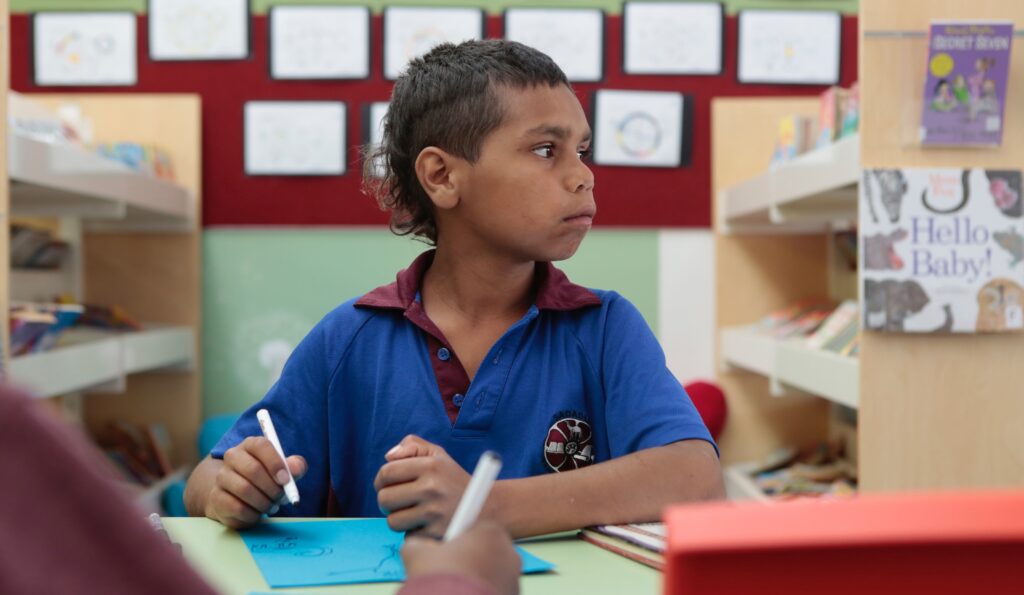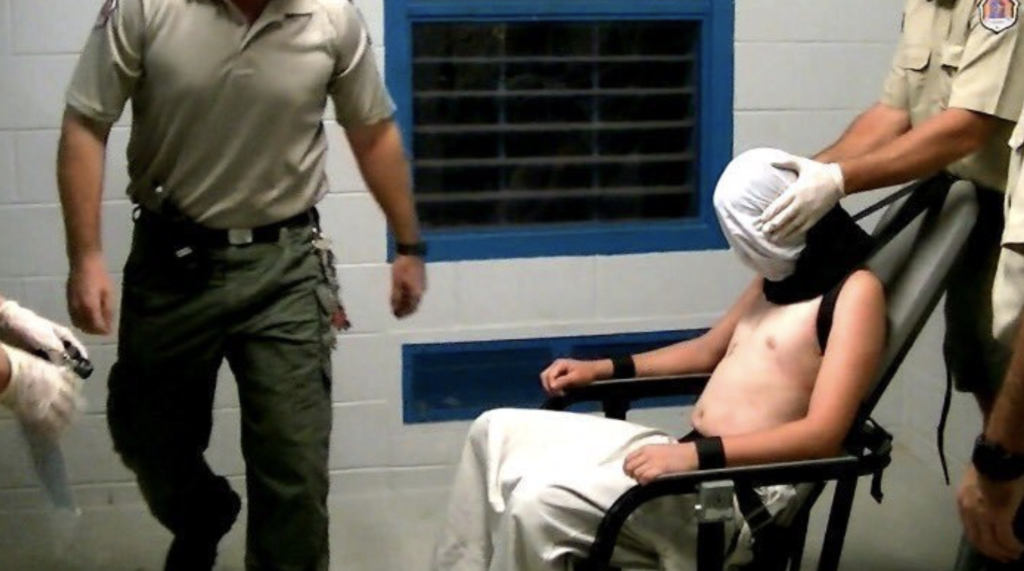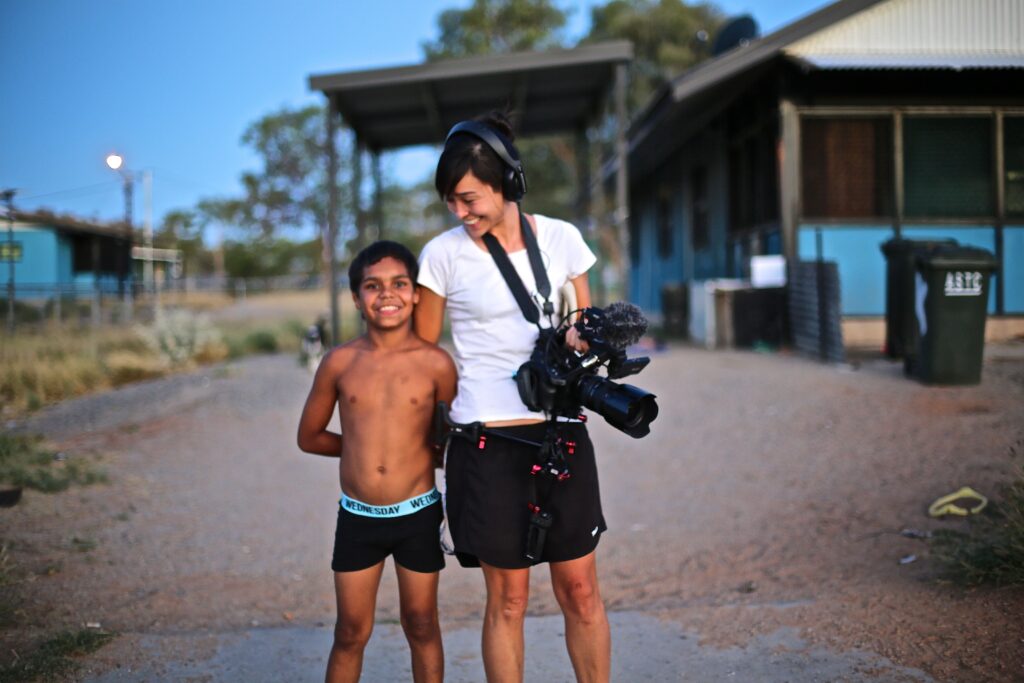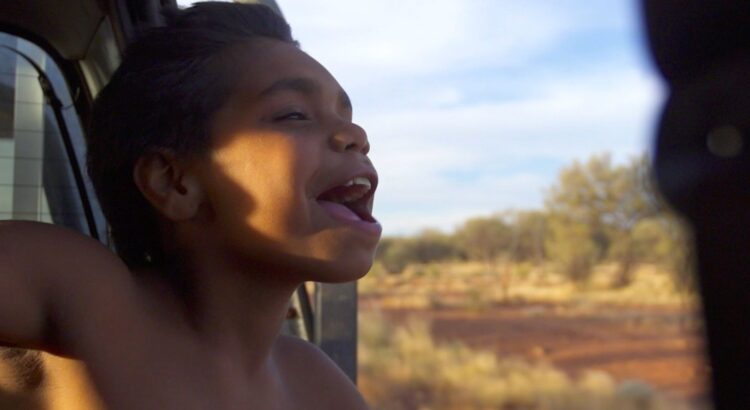“We have apologized, what more can we do?” Unfortunately, this is not an uncommon response when Australians are asked about the colonial wrongs of the past. The extraordinary documentary In My Blood It Runs shows exactly what Australia can do for the First Peoples of Australia besides apologizing. The history of colonialism rarely effects white society nowadays, but this film shows how the native people still have to live with the consequences of it every single day. Proving that colonialism does not end with decolonization.
The approach of the documentary is simple: we follow the energetic, cheeky and intelligent ten-year old Indigenous boy Dujuan in his daily life around Alice Springs. The outcome however is rather complex, because we see the world through Dujuan his eyes, a world that is divided in an Indigenous world and a ‘white people’s’ world. Dujuan his story shows us the challenges Indigenous children have to face while finding their place in two separate worlds. On the one hand, he is a good hunter, works hard to become a ngankere, that means a traditional child healer, and speaks three languages. On the other hand, Dujuan is ‘failing’ at school and is constantly threatened to be incarcerated. At school they don’t see Dujuan his strength, him learning from his elders and land. All they see is a troublemaker, deeply effecting his self-esteem. Instead of helping a ‘struggling’ student the system categorizes him as ‘the problem’. As a result, Dujuan runs away from school.
d

Watching this documentary, you will learn what kind of impact residual colonial baggage has on the Indigenous community nowadays. It starts with a failing education system that is still not acknowledging the Indigenous culture. Government policies have pushed towards an English-only approach at school which means Indigenous language lessons are only thirty minutes a day. Also, the history lessons have nothing to do with the history that Indigenous children are being told at home. When Dujuan raises his hand to ask a question about the ‘white men’s history’ he simply gets ignored. Where is the representation of the Indigenous culture? Even though one school in the outback cannot represent a full country, it does address the problematic issues visible in the education system. As Dujuan’s mom explains:
d
“White people educate our kids in the way they want them to be educated…we want our kids to grow up learning in both ways”
d
We learn how Dujuan his rights are constantly violated or systematically denied: the right to practice your own religion, your own language, and your own culture. While the movie goes on showing old-state propaganda from the twentieth century, in which you see young Indigenous children who were taught to behave like white people, you wonder how much has changed in the last decades.

Even though the education system is failing, Dujuan his family puts a lot of effort in encouraging him to go to school, aware of the fact that Indigenous children have a high risk of ending up in the criminal justice system when not attending school. Unfortunately, the constant threat of being incarcerated or taken away by welfare reminds the Elderly of a traumatic past of forcible removal of Indigenous children, also known as the ‘Stolen Generations’. By showing Dujuan the documentary ‘Australia’s Shame’, they try to warn him what will happen if he does not attend school.
The movie is produced by Good Pitch Australia and Screen Australia, the latter a federal government agency focusing on supporting Australian narratives. What stands out in the making of this film is the collaborative approach. Credited as advisors and collaborating-directors, Dujuan his family and community played a major role in the making of the film, alongside the film team and a team of advisors. Maya Newell, the Australian director, has been making films alongside Indigenous families for over a decade, building up a foundation of trust. ‘Organically, In My Blood It Runs rose from those relationships’. Maya made it possible for the Indigenous community to reclaim their past, having ownership and control over the way their story is presented: they tell their own story.
d

It is clear that the film is calling out for change, so In My Blood It Runs is joined by a multi-year impact campaign focusing on three main goals: they want to address racism, they want an Aboriginal and Torres Strait Islander led education system, and lastly, they want juvenile justice reform. If the current system is not changing, the rights of Indigenous people are constantly violated, and Indigenous lives are at stakes. Not only was Dujuan his story told in the Senate, he has also given a speech at the United Nations Human Rights Council in Geneva, explaining his goal:
d
“I want a normal life of just being me……if you want kids to go to school and learn, then schools should be run as well by Aboriginal people…let us speak our language in school and learn about what makes us strong… I want you to stop cruelling 10-year old kids in jail… I want to be allowed to be an Aboriginal person”
d
Looking at how well thought out the documentary is, it is no surprise the film has been extremely well received by critics. The documentary has won several awards and has been praised in many reviews for pointing out the defects of the current welfare system. It is giving Aboriginals agency over their own story and calling out for self-reflection. Although some critics argue that the issues are not placed in a bigger socio-political framework, by doing this you will run the risk of diluting comprehension and empathy. This comes at the expense of Dujuan’s portrait.
Coming back to the question this article started with: what can Australia do besides apologizing? The movie tells you exactly what to do: join Dujuan in his fight for change and visit the impact campaign to sign petitions like #raisetheage, host a screening of the film for your network or donate to support the campaign.
Marith Danhof
d
d
